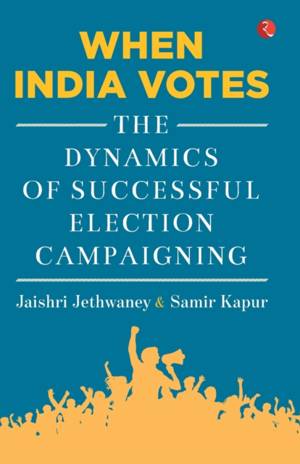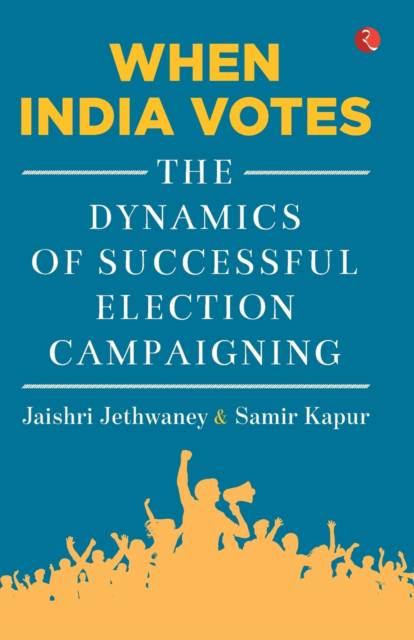
- Afhalen na 1 uur in een winkel met voorraad
- Gratis thuislevering in België vanaf € 30
- Ruim aanbod met 7 miljoen producten
- Afhalen na 1 uur in een winkel met voorraad
- Gratis thuislevering in België vanaf € 30
- Ruim aanbod met 7 miljoen producten
Zoeken
When India Votes
The Dynamics of Successful Election Campaigning
Jaishri Jethwaney
Paperback | Engels
€ 9,45
+ 18 punten
Omschrijving
Elections have always been festive occasions in liberal democracies, and India is no exception. Media becomes one of the most important players in elections because of its power of reach and agenda-setting. From one government-controlled television in India in 1984, to hundreds of news channels owned by various interest groups, a burgeoning print media, the coming of the social media and the tiniest and most 'lethal' of mass reach weapon, the mobile phone-all these have changed the way elections are now contested! The power of mass contact through rallies and public gatherings, reinforced by the event-driven media channels and the power of digital media to reach out to the young audience, has redefined electioneering in India. When India Votes looks at the theoretical underpinnings of the relationship between democracy, mass media and election campaigning, as well as representative campaigns of the last three decades of the two major players, viz. the Congress and BJP.
Specificaties
Betrokkenen
- Auteur(s):
- Uitgeverij:
Inhoud
- Aantal bladzijden:
- 218
- Taal:
- Engels
Eigenschappen
- Productcode (EAN):
- 9789353333805
- Verschijningsdatum:
- 20/03/2019
- Uitvoering:
- Paperback
- Formaat:
- Trade paperback (VS)
- Afmetingen:
- 129 mm x 198 mm
- Gewicht:
- 217 g

Alleen bij Standaard Boekhandel
+ 18 punten op je klantenkaart van Standaard Boekhandel
Beoordelingen
We publiceren alleen reviews die voldoen aan de voorwaarden voor reviews. Bekijk onze voorwaarden voor reviews.











